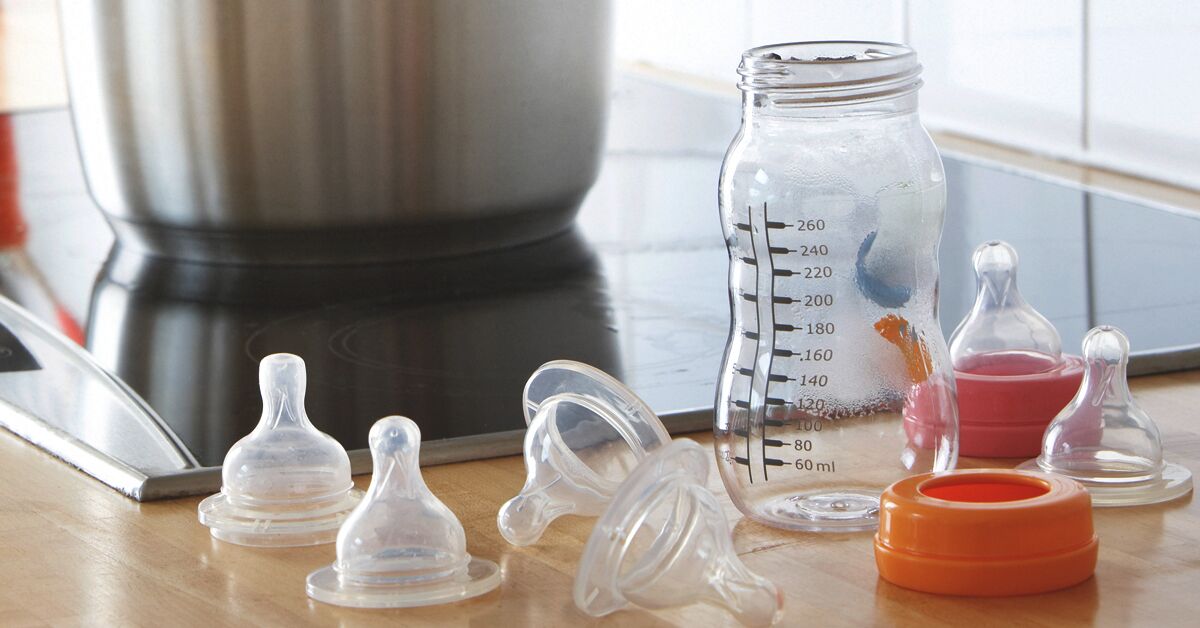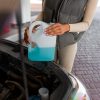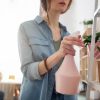- Empty cart.
- Continue Shopping
New Moms Guide: How To Clean And Sanitize Baby Products Correctly

Infants are so adorable to all of us. They are, however, easy targets for germs too. This puts the parents on high alert all the time, forcing them to clean, wipe down, and take other safety measures with high-quality baby products in the UAE to limit the exposure of their infants to potentially harmful bacteria. To lessen the risk of getting infants infectious, make it a habit to clean frequently and thoroughly any areas where the baby spends a lot of time.
How Often Should You Clean Baby Products in the UAE?
Anything filthy or soiled needs to be cleaned with the best baby products in the UAE!
It also depends on the item. If an item is being used more frequently, it should be cleaned and disinfected regularly. Additionally, anything that has a high probability of getting into your baby’s mouth needs to be cleaned frequently.
For instance, it is advisable to clean teething toys or items several times per day, or before and after each use.
Three Different Levels of Cleaning
Cleaning entails washing away dirt and debris with lukewarm water and mild soap. This cleans up dirt and some germs but doesn’t eliminate viruses or bacteria. Hygiene For All offers the best quality baby care products in Dubai that help you clean baby items perfectly.
Sanitizing is another method that helps to reduce germs to safe levels. It does not totally eliminate all germs, but at least 99.9% of them are reduced to a level that is safe by public health standards.
Disinfecting is the only technique that eliminates almost all germs. It can be done on hard and nonporous surfaces. For example, toilets, changing tables, high-touch areas (door knobs, faucets, drinking fountains, etc.), and blood spills, vomit, feces, and urine.
The Best Methods to Clean Baby’s Items
Different baby products in the UAE require different cleaning techniques in order to be clean and functional.
So, here are some suggestions for safe and environmentally friendly ways to clean baby products:
Use Wipes
Wipes are great to have on hand for quick clean-ups, whether it’s your baby’s sticky hands, a soiled bottom, or a germ-ridden toy.
Clean With Vinegar
Using vinegar is a good alternative to cleaning toys in a chemical-free manner. Prepare a solution of water and vinegar (add essential oil to lessen the vinegar’s smell) and clean the stuff!
Boiling
One of the best methods for cleaning and sanitizing hard, plastic toys is boiling. However, before placing a toy in boiling water, make sure the label does not warn against doing so. Additionally, make sure the toy is free of batteries and electrical cords and that boiling water won’t melt it or harm it.
Use Warm and Soapy Water
It can be very effective to hand-clean toys in a sink filled with warm and soapy water. Clean the toys with a cloth or toothbrush. Then, rinse the toy with fresh water to remove any remaining soapy residue. Or, you can also wipe it down with a cloth dipped in plain water.
Wash the Stuffed Toys in Washing Machine
Many stuffed animals can be washed in the washing machine. Set the washing machine to a gentle cycle with cool or warm water and a baby-safe laundry detergent. However, if you still have the label for the stuffed animal, check to see if it can be washed. Hygiene For All offers you high-quality baby care products in Dubai, such as detergents to keep your baby products germ-free.
Using a Steam Cleaner
A steam cleaner can be used to clean practically every baby item, including strollers, plush toys, and smaller toys. Steam cleaning is a fantastic chemical-free alternative as well!
Are you using your cleaning products correctly?
If products are used improperly or unnecessarily, you run the risk of exposing yourself, your children, and other people to germs and hazardous chemicals. Use the safest and most efficient baby care products possible to safeguard the health of kids and those using the products.
Always read the label before using a product to clean, sanitize, or disinfect. Additionally, never combine bleach with any other chemical cleaner!
Be sure to read the dwell time listed on the sanitizer or disinfectant label. This specifies how long the product must remain visibly wet on the surface and in contact with the germs in order to kill them. Use a timer and repeat the process as necessary to keep the surface moist throughout the dwell period.
Parents who take on board the above-mentioned guidance can be confident that they are effectively getting rid of dangerous germs without using harsh cleaners that might endanger the health of their young children.







